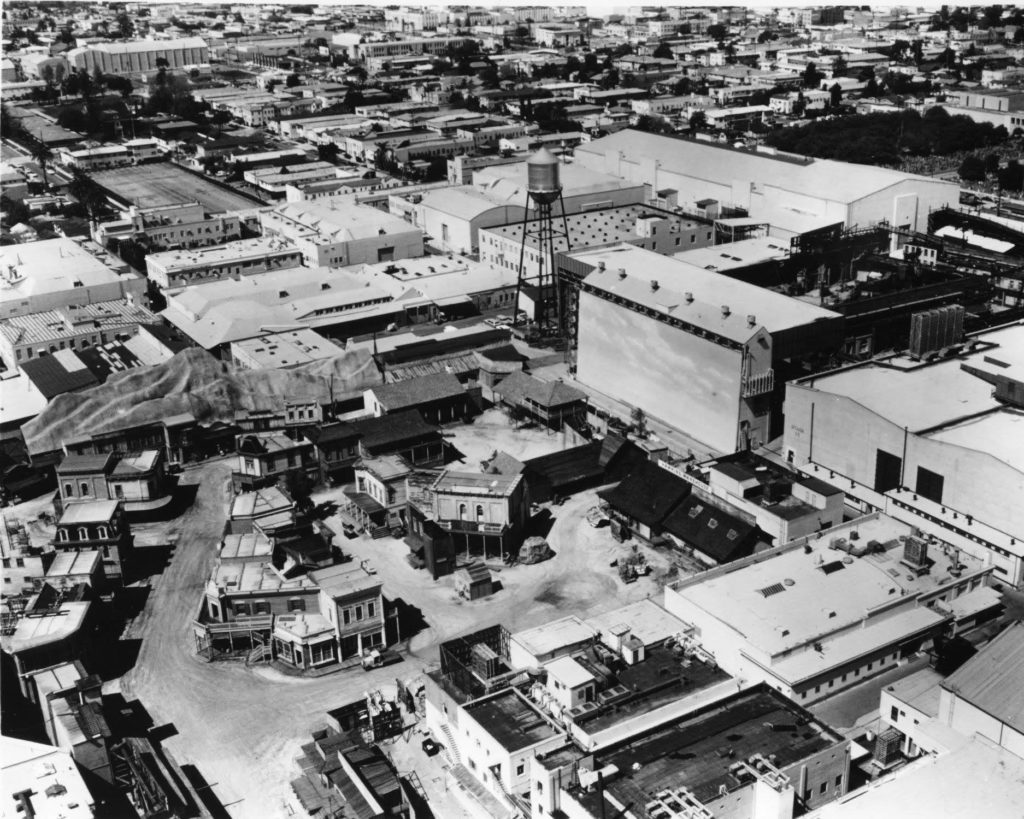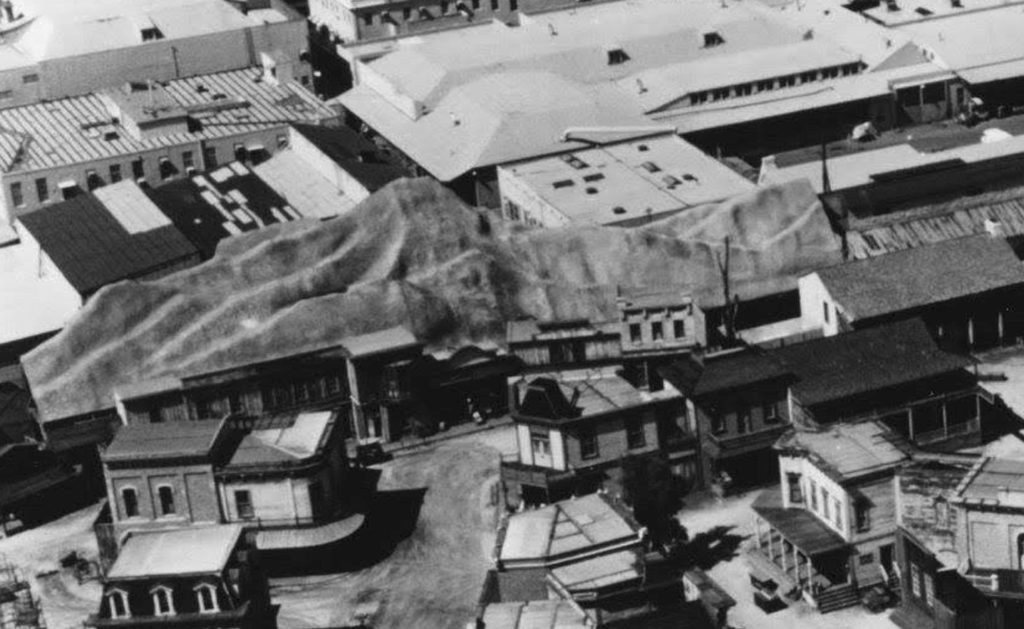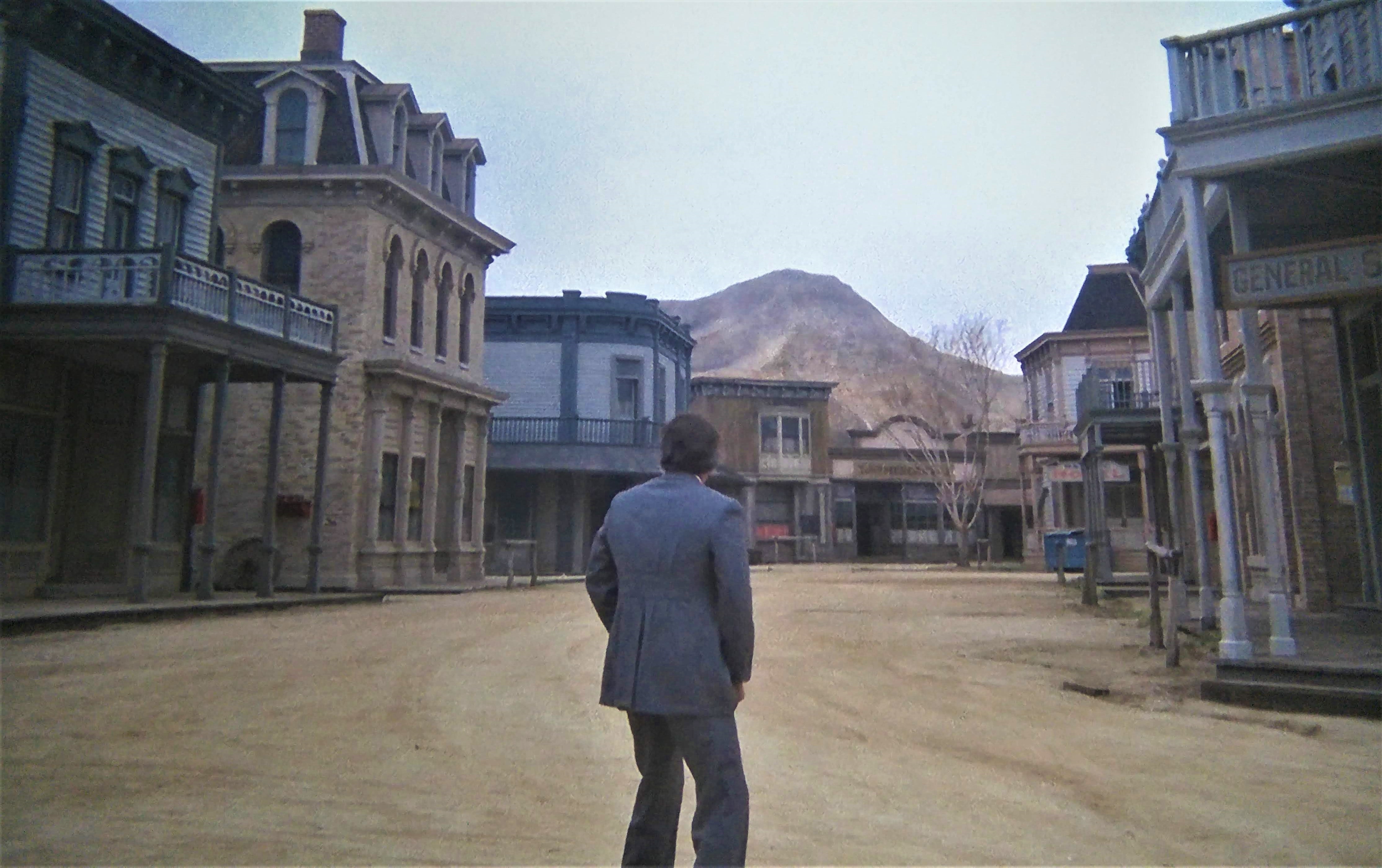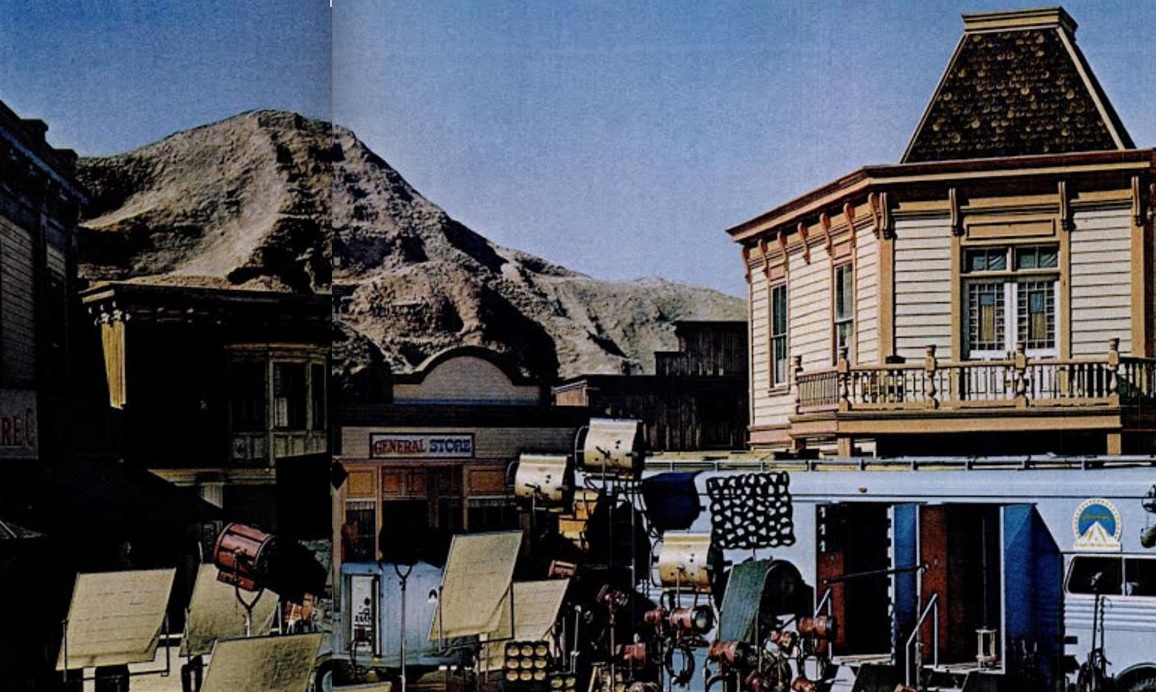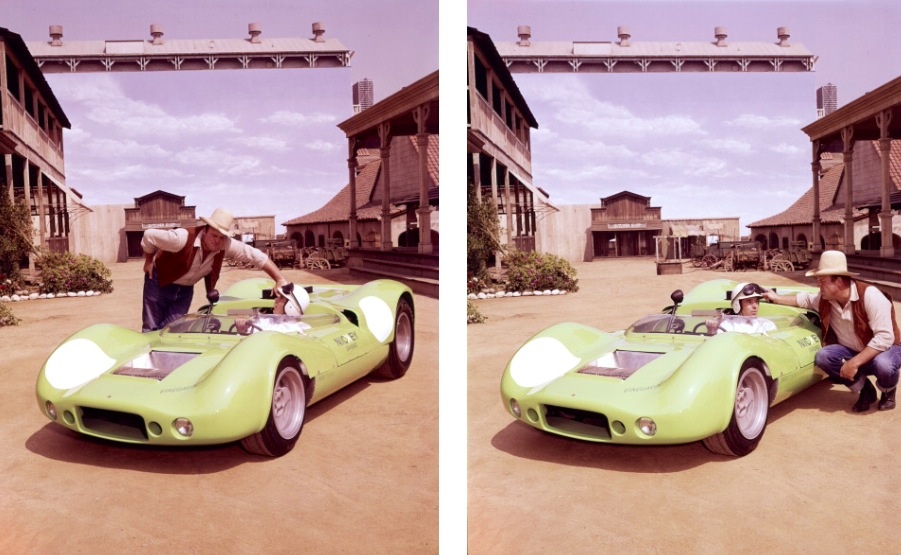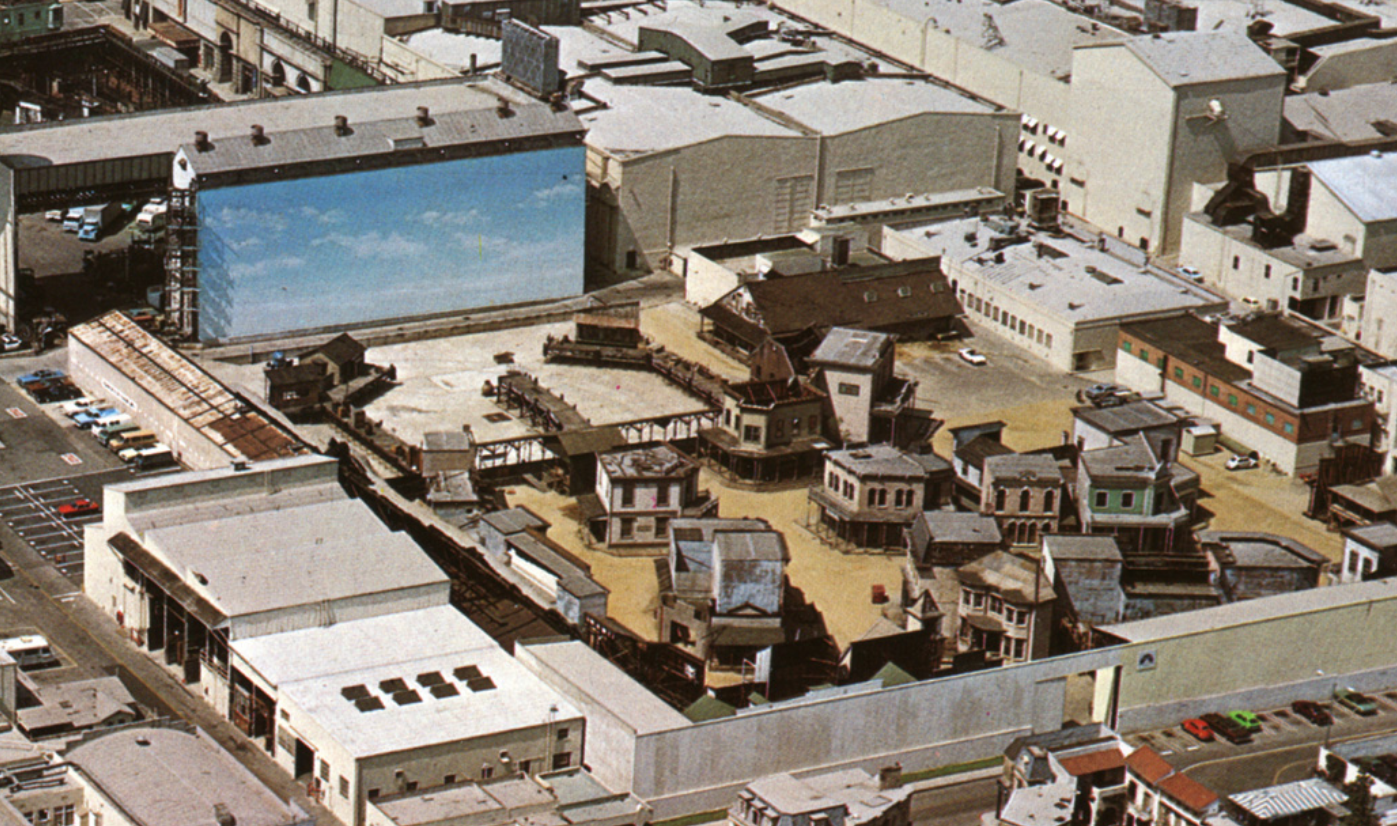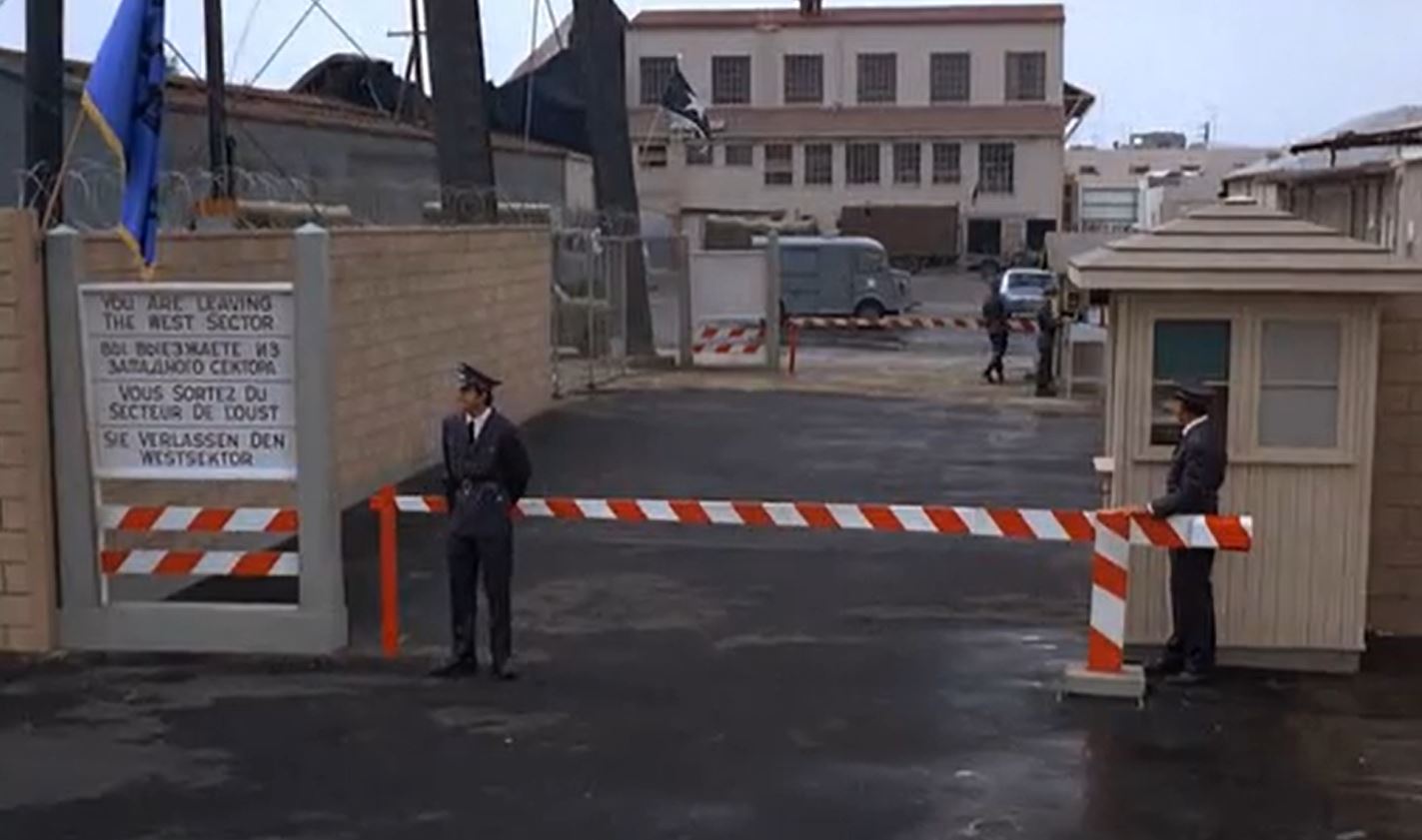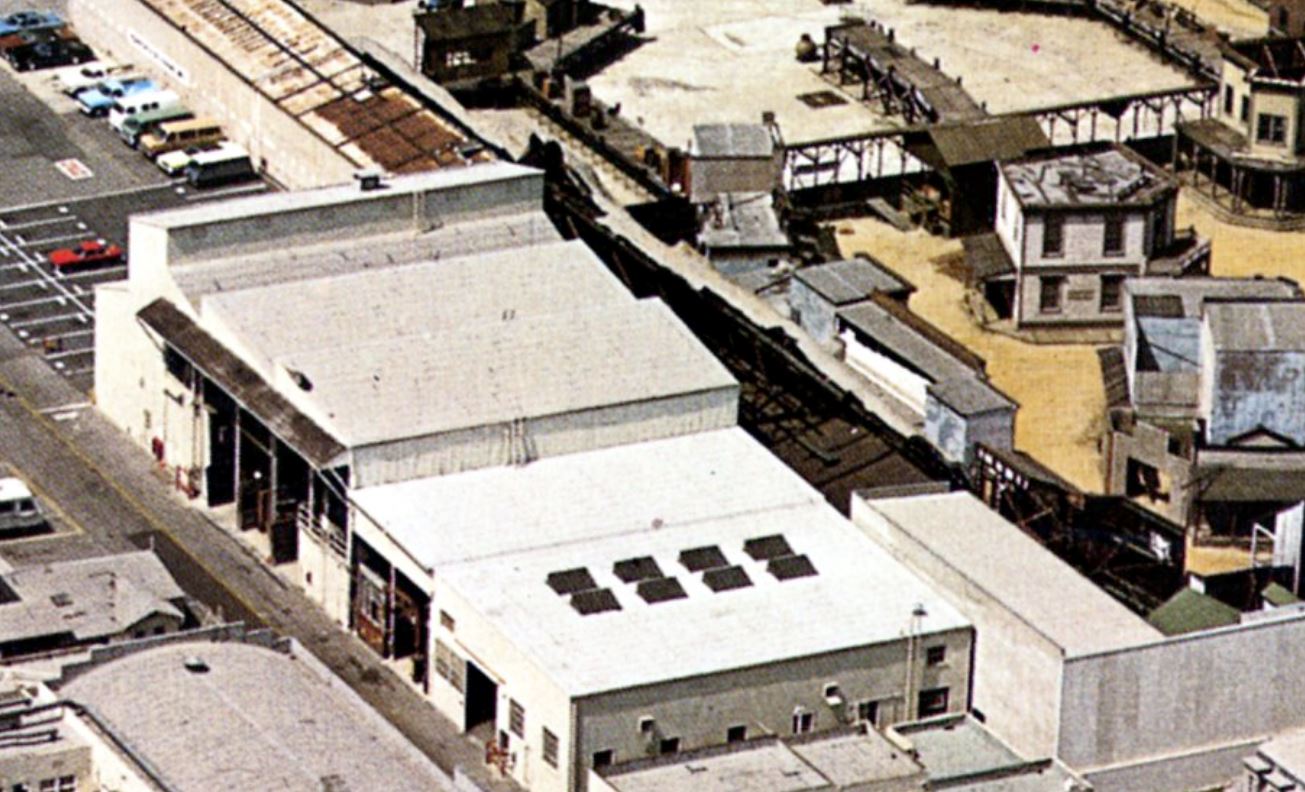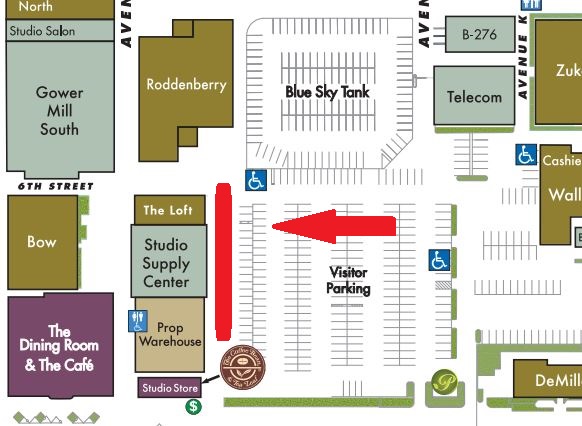Once there was a mountain in the middle of Los Angeles. Most movie studios, in their backlots or in movie ranches in the San Fernando Valley or in environs close to L.A., had a Western town. It was simply part of the time. Starting with The Squaw Man in 1913 (or The Great Train Robbery, 1903, considered the first Western film), all the way up to the late 1960s, Hollywood pumped out likely thousands of Western full-length features, shorts, and serials. The viewing public could not get enough.
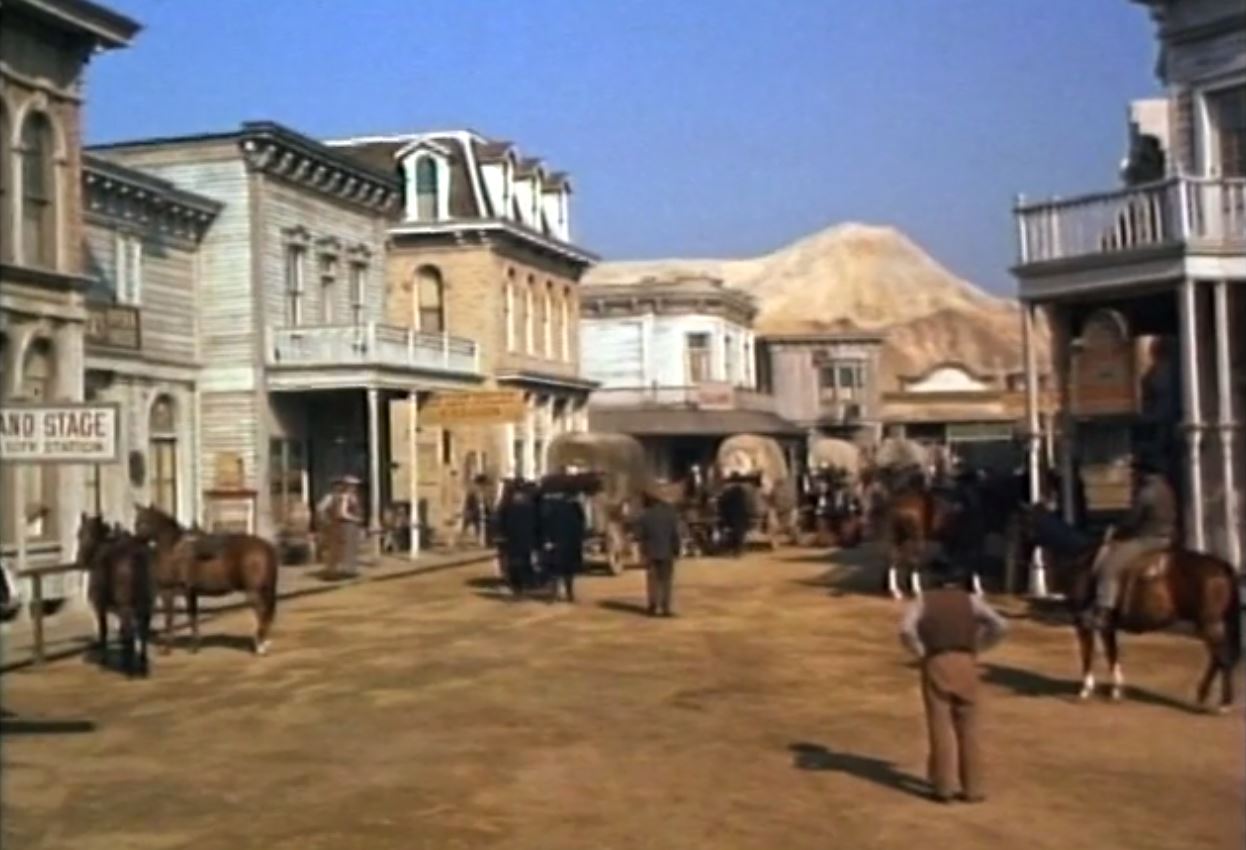
Then, when the 1960s happened, the classic Western fell quickly, deeply out of favor. Westerns were seen as racist, imperialistic, colonialist, bigoted, xenophobic, misogynistic, albeist, sexist, homophobic. And admittedly, it had become a worn-out form. The immediate cure was the anti-Western, with such grotesqueries as Little Big Man, and the ultimate cure was to kill off Westerns altogether. It was time. The old days were over.
Western Street’s Mountain Backdrop
One victim of Paramount’s Western town pull-out was the scaled-down mountain backdrop behind Paramount’s Western town. Steven Bingen, in his excellent Paramount: City of Dreams, tells us that this mountain went up in 1955 and was constructed of chicken wire and plaster. It was a three-dimensional backdrop of sorts, though not with much dimension. As seen in those of the aerial photos below, the mountain was a fairly thin sliver covering up a warehouse.
For a rare glimpse at the mountain’s super-structure, check out Jerry Schneider’s Movie Locations Plus page on Paramount. This image shows that the mountain was almost like a flat cut-out with some texture that has been tilted back about 40 degrees.
Bingen continues to say that initially a painted backdrop of a cloudy blue sky was erected behind the mountain, “similar to the B-tank backdrop,” but this proved unnecessary because of Los Angeles’ already cloudy blue skies. (B-tank is a massive 914,023 water tank with a backing that measures 175’6″ wide by 61′ high.)
Accounts from people who worked at Paramount in the 1970s say that, by the late Seventies, the mountain was already looking decrepit, before it was finally torn down.
1957
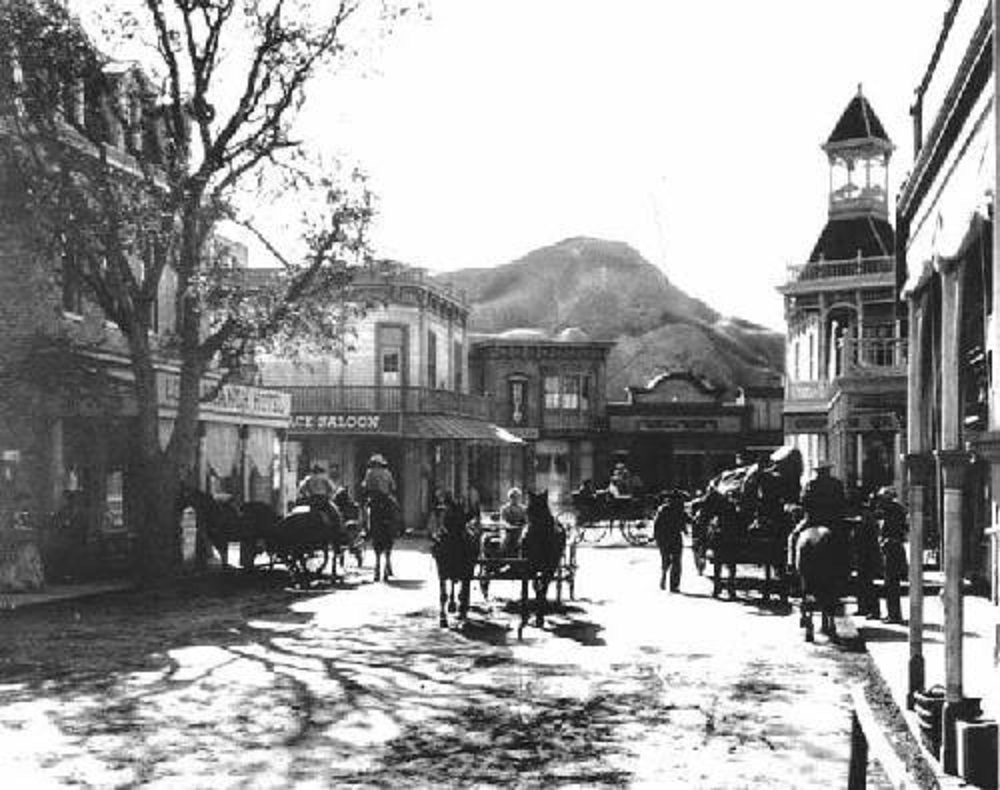
1960
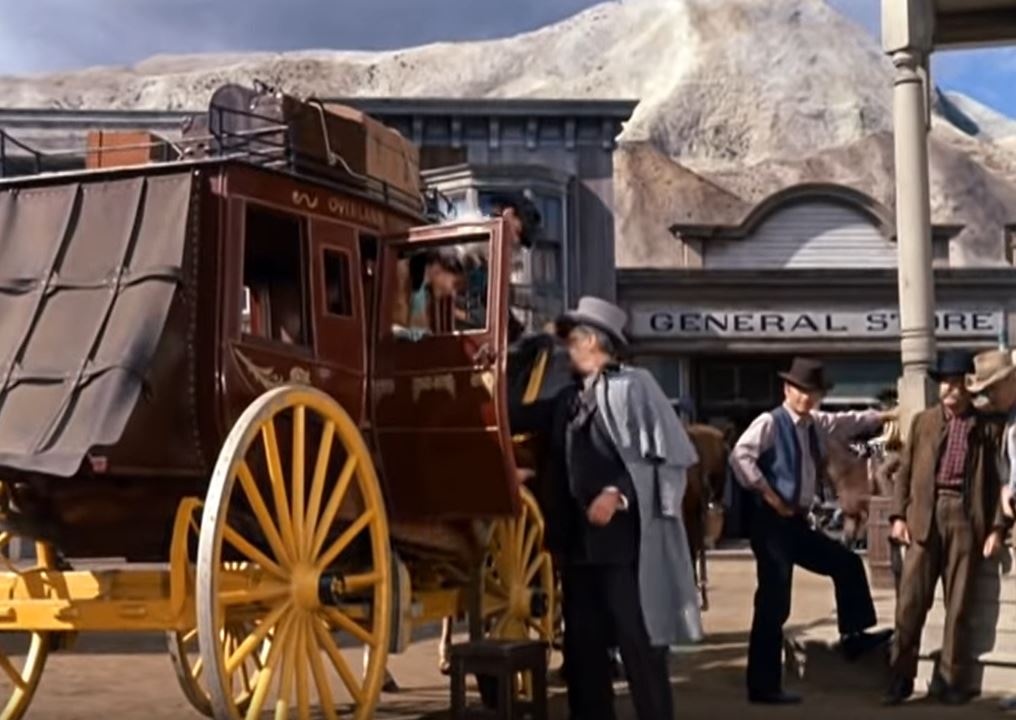
Above, a good close shot of the Paramount mountain from Bonanza.
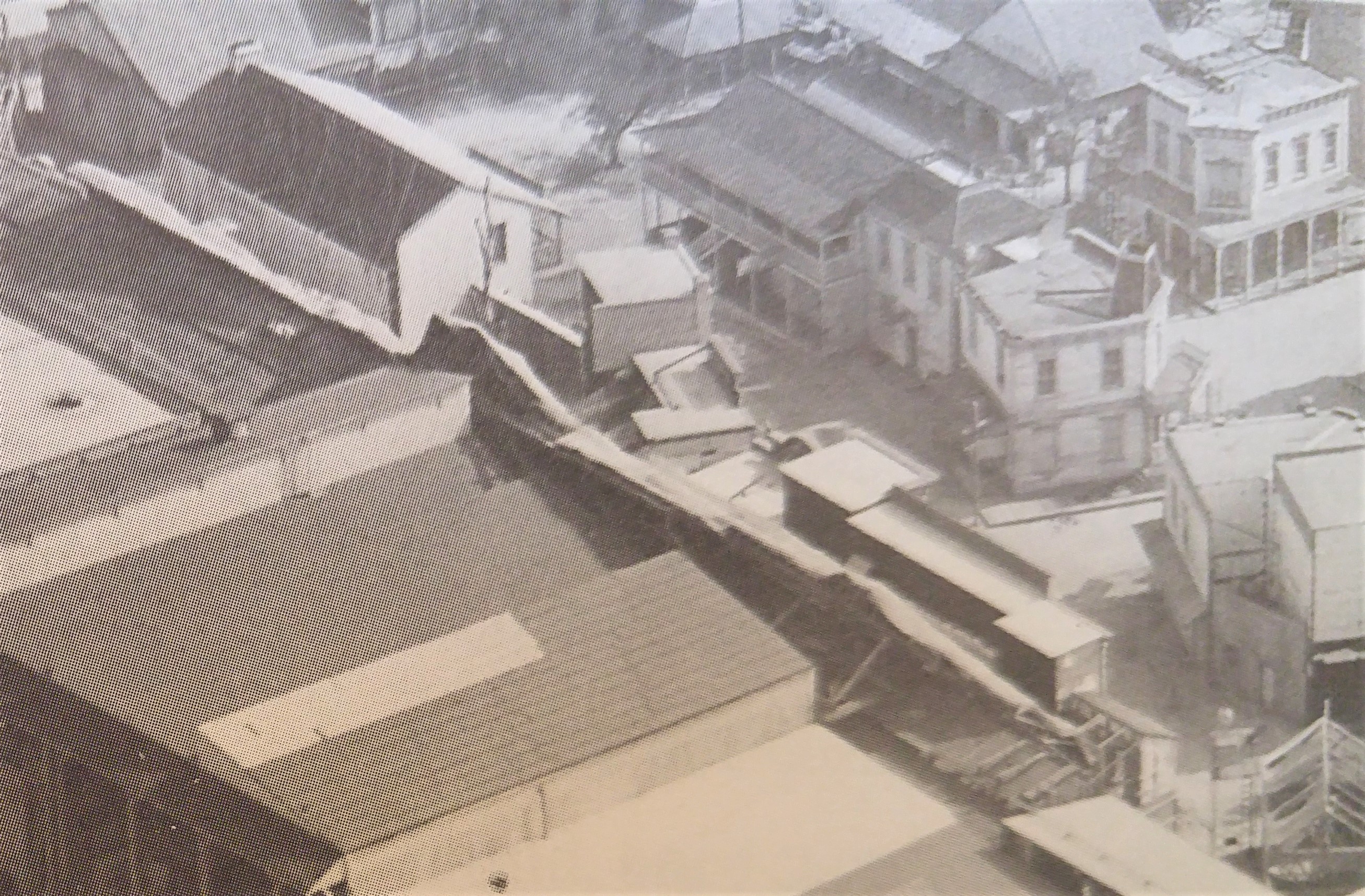
This is a tight close-up of the backside of the mountain in 1960. Due to the angle of the shot, the mountain’s size is almost impossible to detect. The first image in this article, the one with all of the movie-making equipment laid out, was taken around the upper-right side of the photo, pointing leftward. That was one of the favored angles for many TV shows and movies to come.
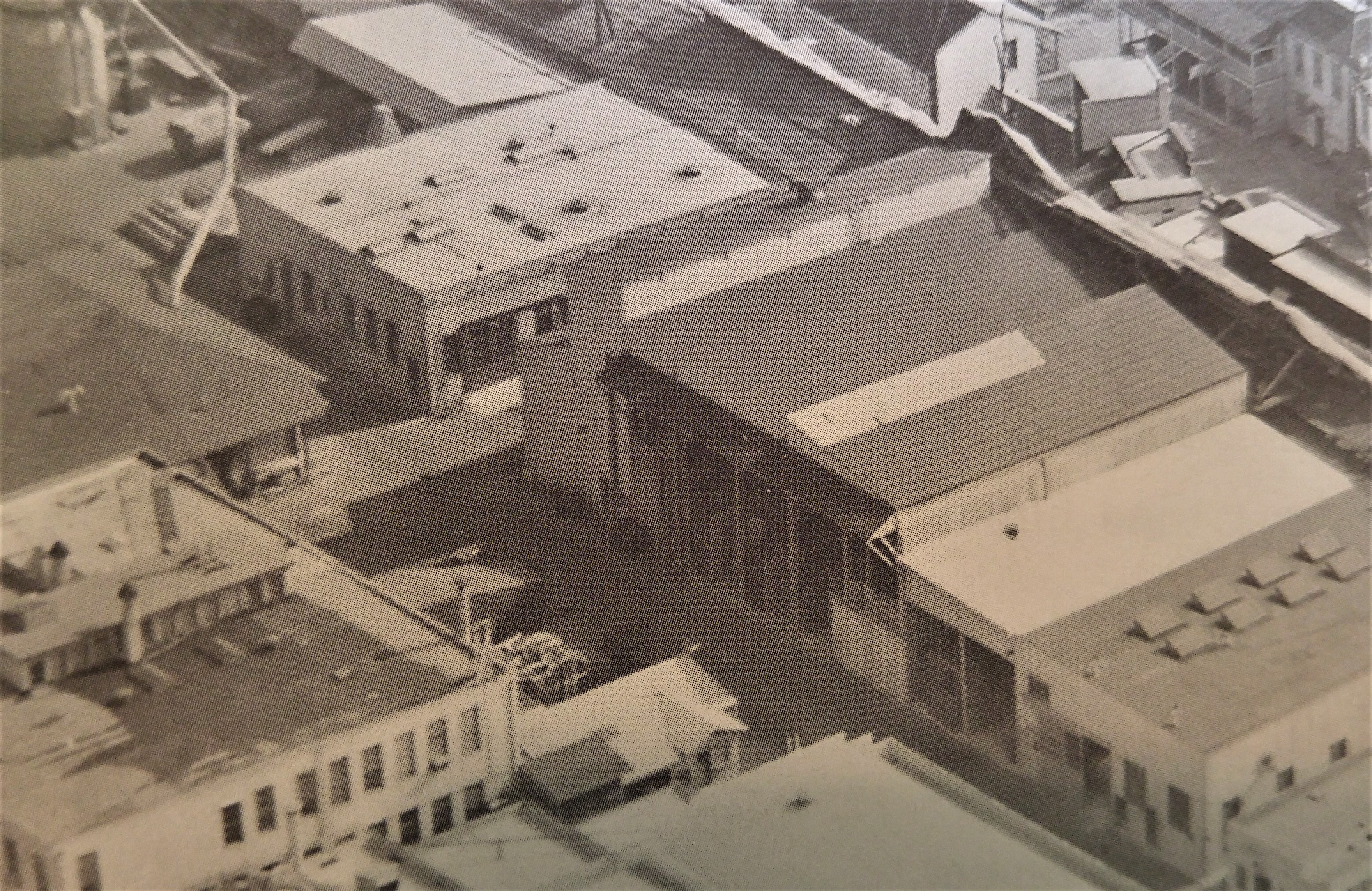
A close-up of the above photo. The area in the upper-left is where the Mission Impossible scene referenced later was filmed.
1961
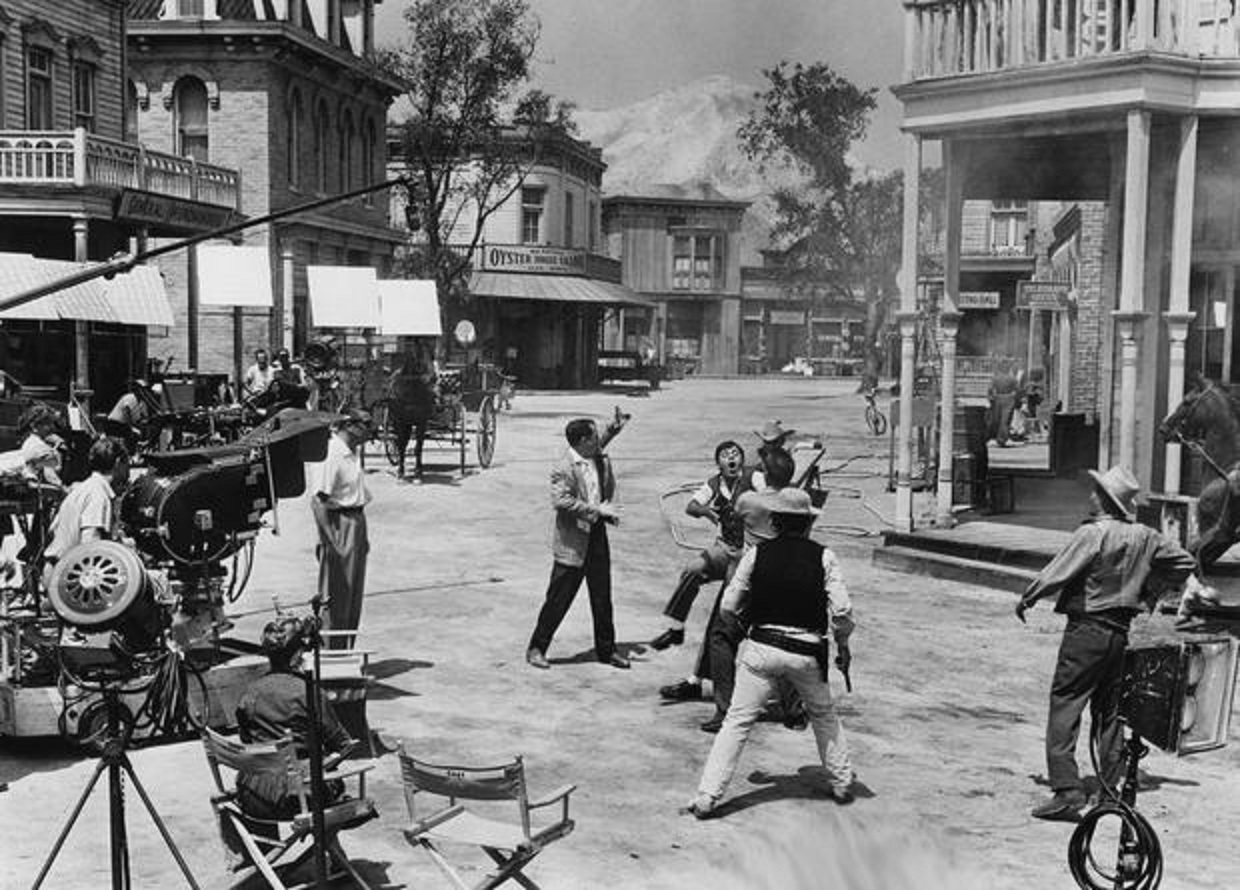
1966
Obviously, this is not the mountain but a sightline down a different Paramount Western street toward B-tank and its sky. This shows the type of building roof (though higher) that the Western mountain was covering. It’s also a good demonstration of how well the backdrop’s blue matches the L.A. sky. Above is Bonanza actor Dan Blocker with the sports car he owned named the Vinegaroon and driver John Cannon.
In the aerial view of the Western set below, the Blocker photo is taken diagonally. Imagine a line in an 11 o’clock position, and that’s the direction of the Blocker photo. The mountain would be at a roughly 8 to 9 o’clock position.
1968
In the Mission Impossible TV series, S3/E12 (“The Exchange”), for the 1968-1969 season, you can see the back of the mountain. The actors Barbara Bain and John Vernon are behind the mountain, starting at the base of the iconic Paramount water tower. The edge of the mountain can be seen in the upper-left. In the next two images, they advance: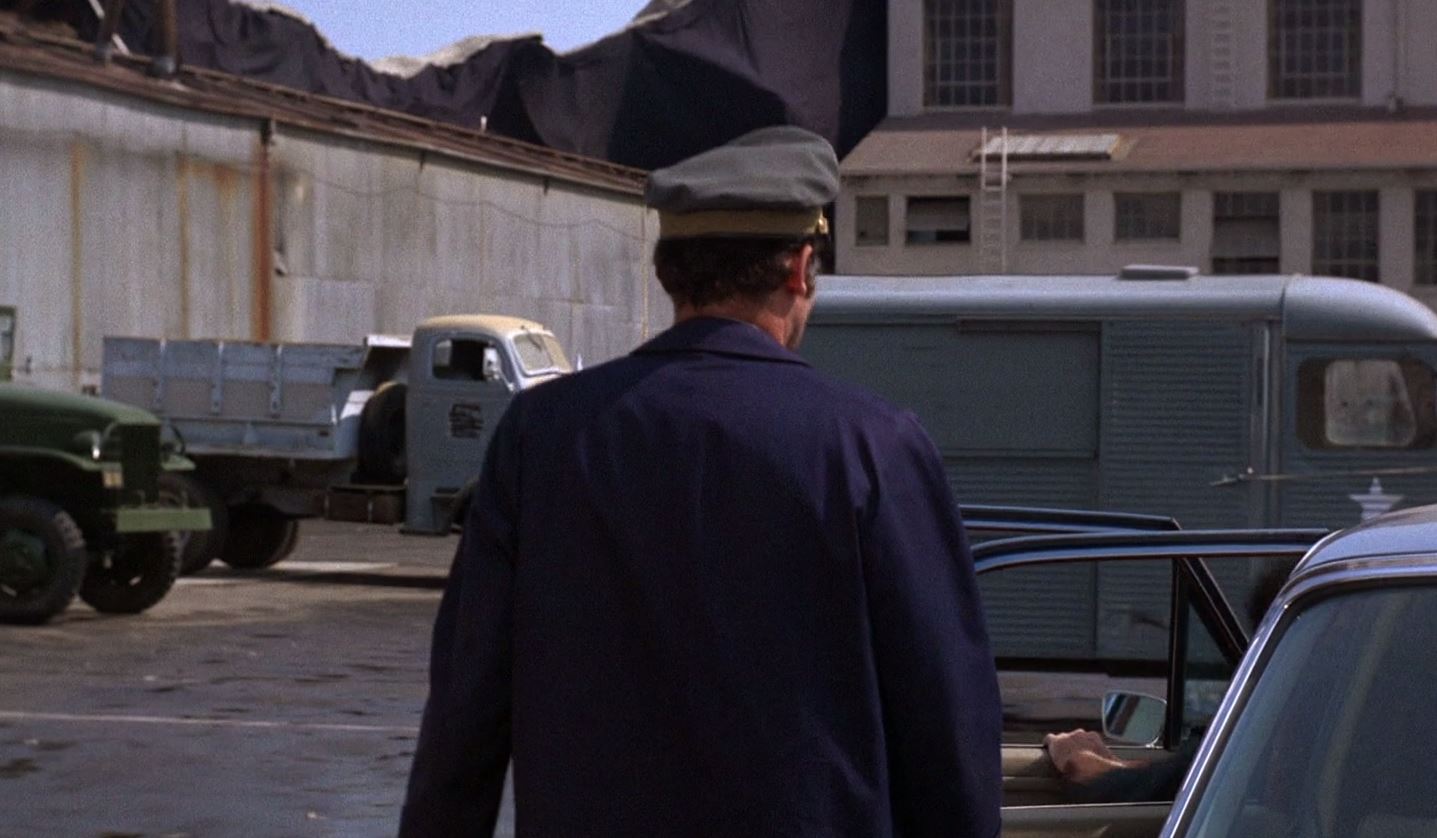
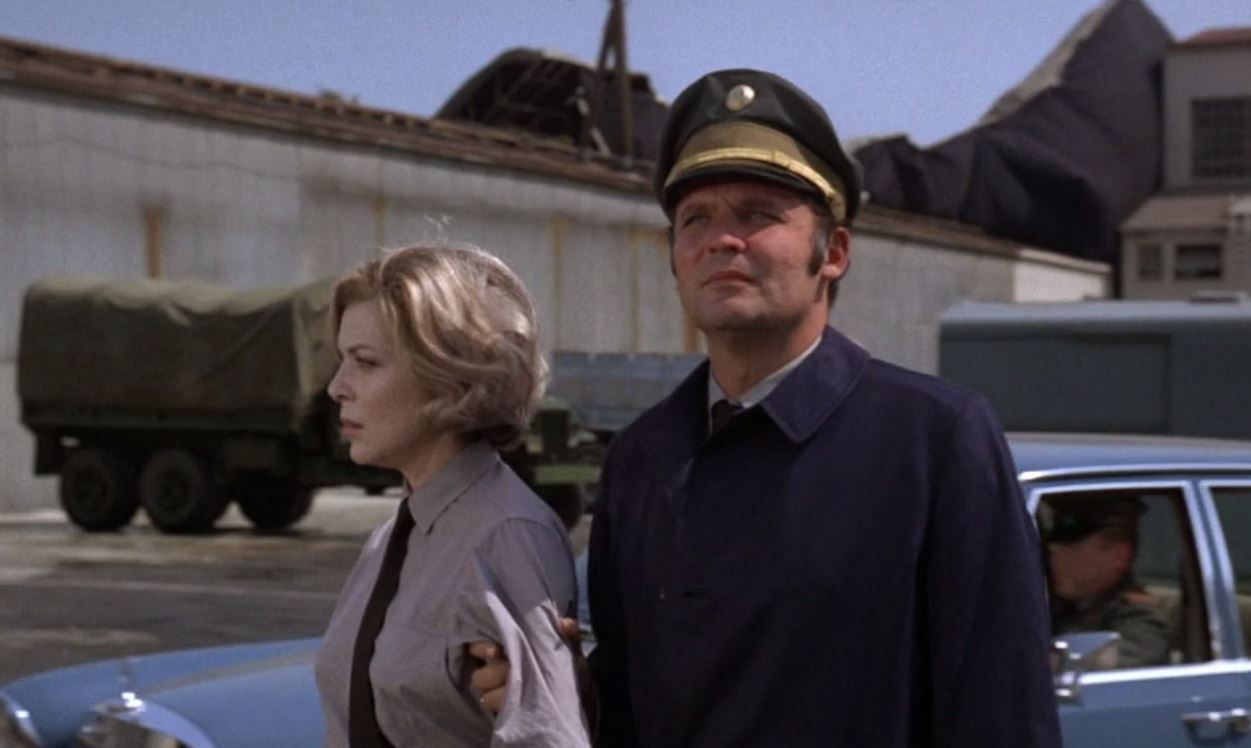
1971
From “Mission Impossible,” Season 6, Episode 2, “Encore.” William Shatner stumbles onto a Western set at the fictional Majestic Studios, which is actually the Western section of Paramount Studios’ backlot.
1971
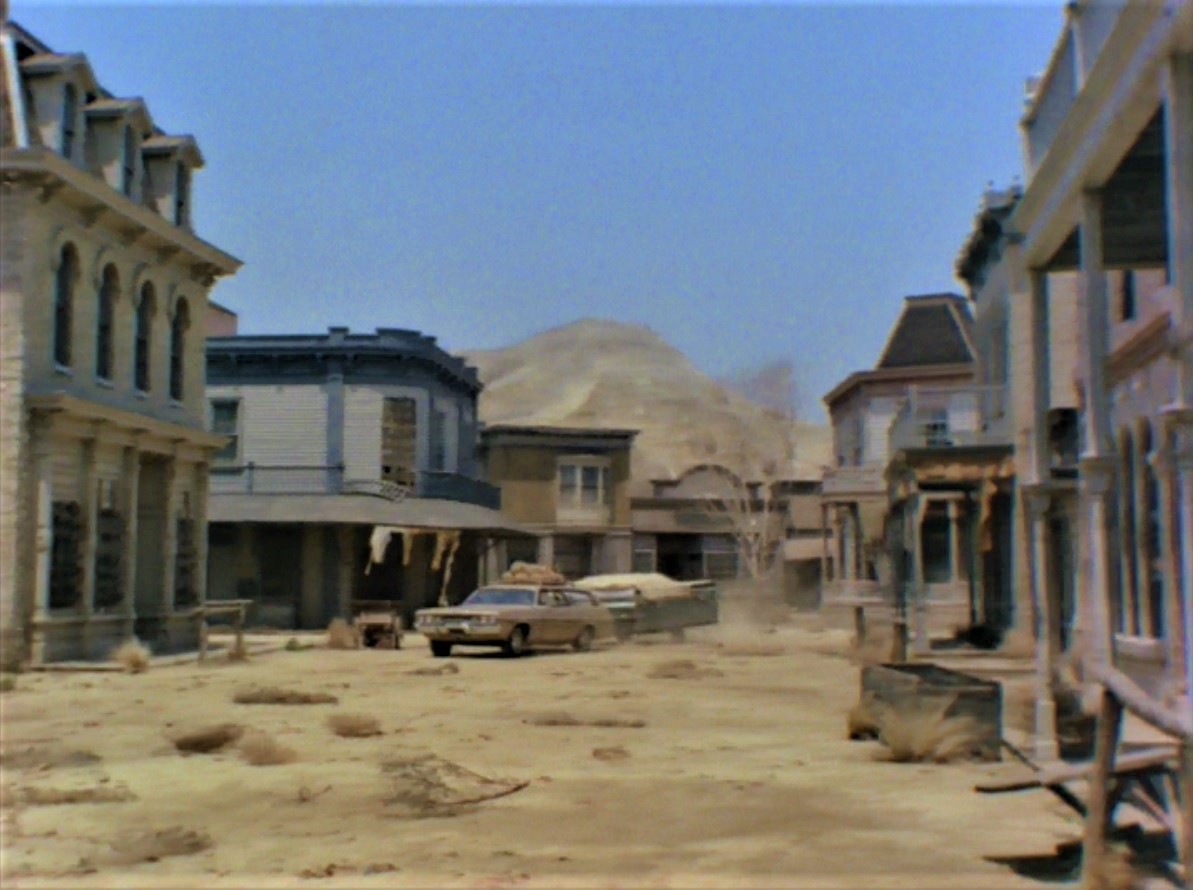
That favorite blended family of 1970s television, The Brady Bunch, found themselves in the shadow of the Paramount mountain in 1971’s “Ghost Town U.S.A.”
1976
The last photo of Paramount Mountain, 1976, roughly the same angle as the 1960 image.
1982
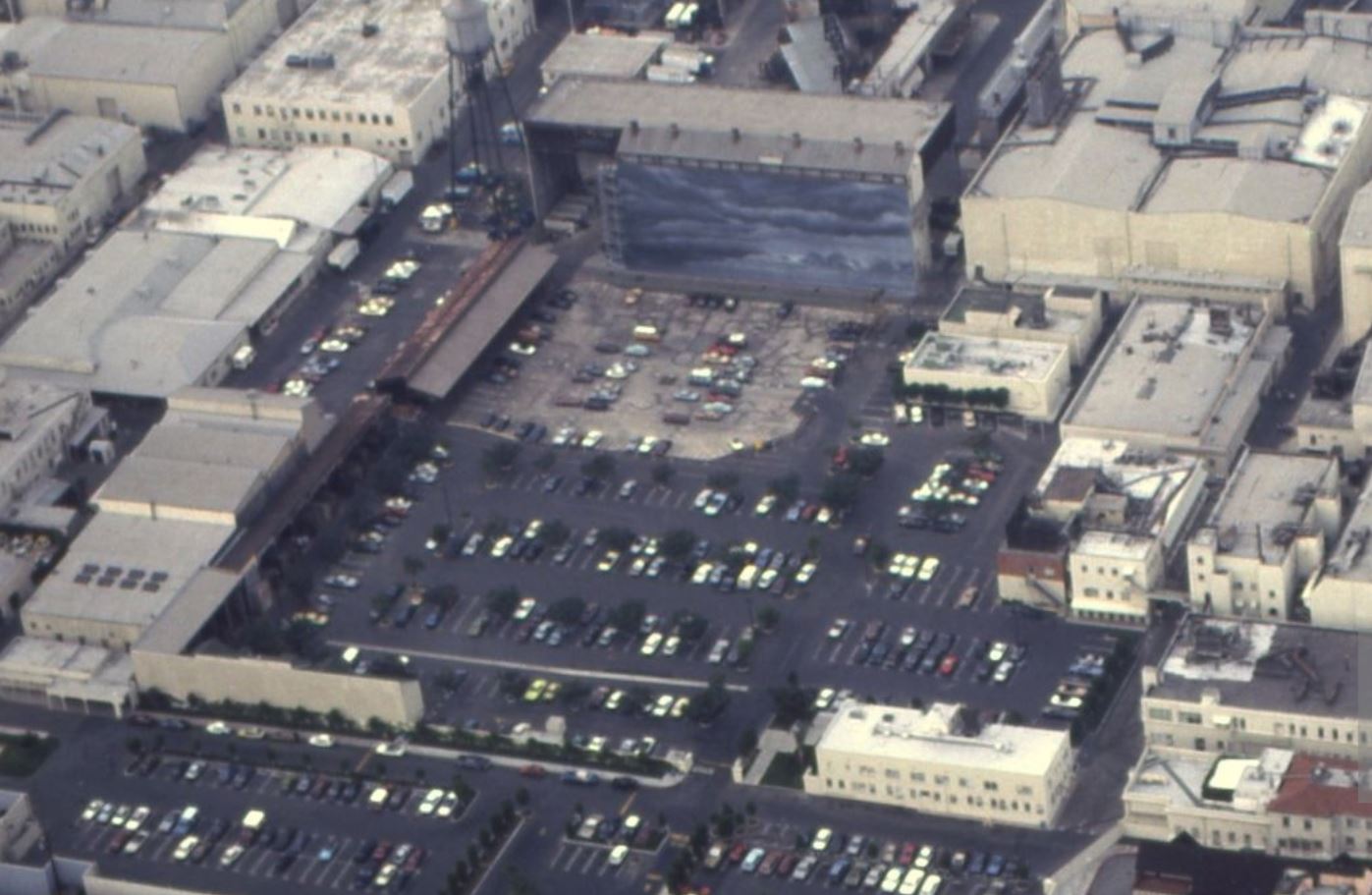
By September 1979, the entire Western street had been bulldozed away to make way for the parking lot. In 1982, nothing was left.
Today: Location of the Mountain
Today, the mountain is long gone. In the above map, the missing mountain is shown as a red strip and indicated by the arrow. It would have been to the side of the larger Visitor Parking near the Blue Sky Tank Parking. The structure housing the Prop Warehouse, Studio Supply Center, and The Loft replaces the previous building.
In fact, the Paramount tour takes you directly under or at least very near to the mountain. After the stop at the Prop Warehouse, you walk north on a walkway, then take a right to walk between the two parking lots.
